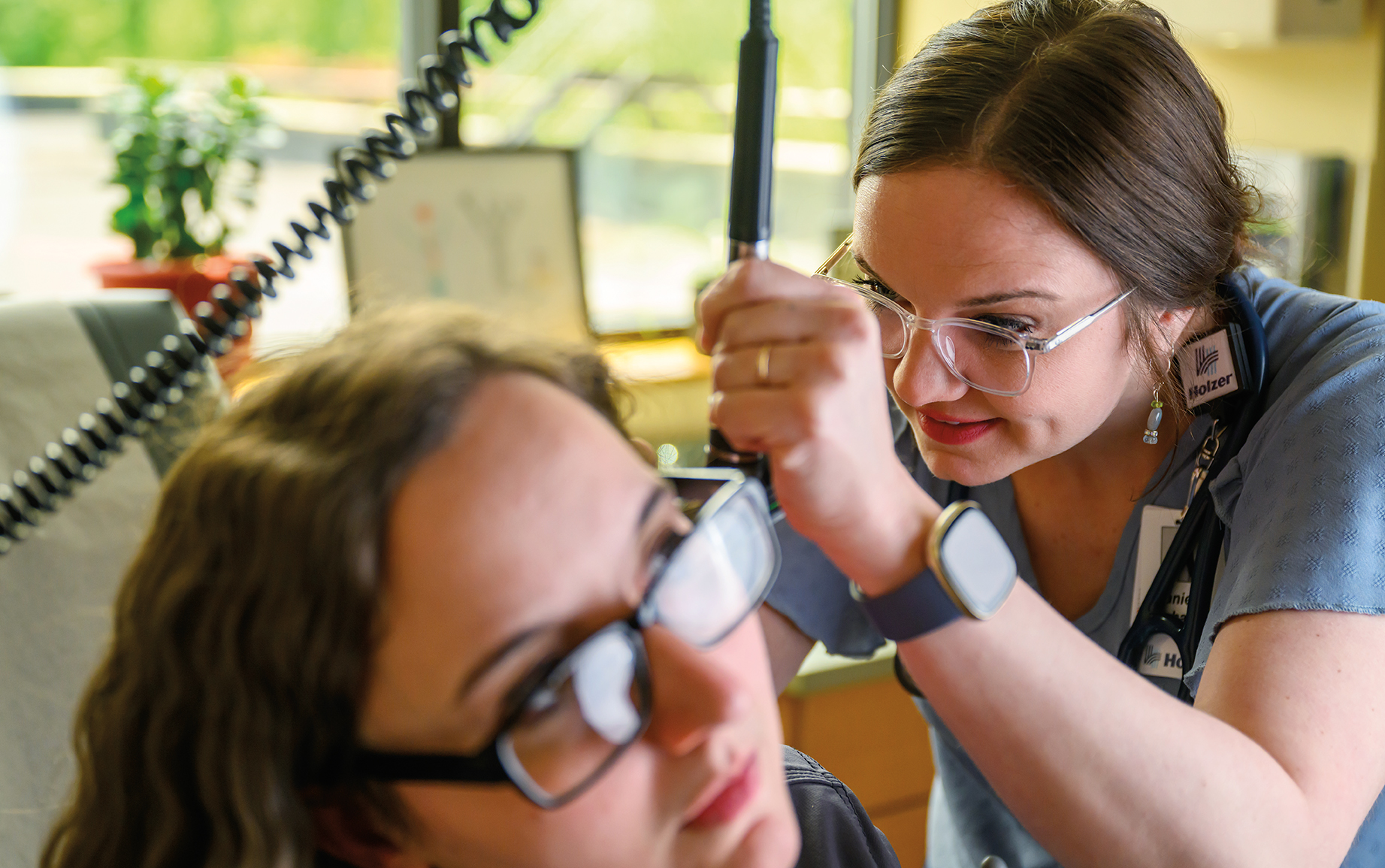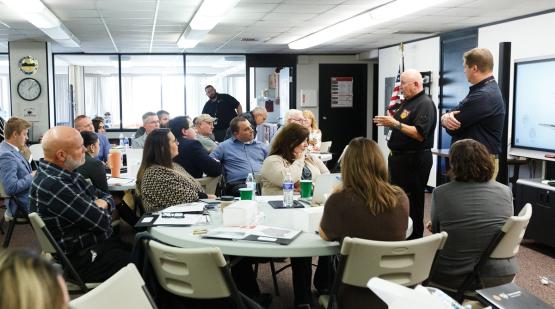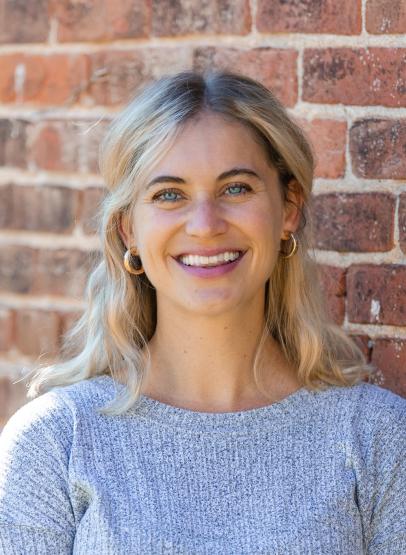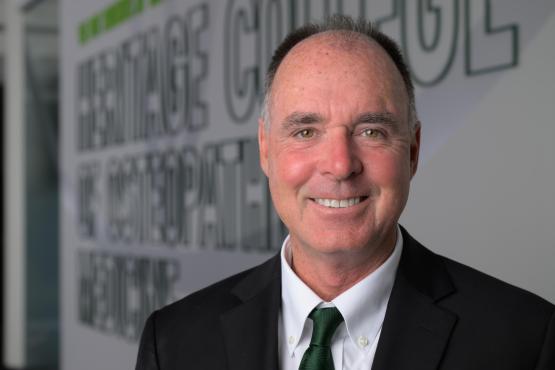
It’s a Thursday morning at the Heritage Community Clinic in Grosvenor West, where Justin Richards just finished his second medical appointment of the week. Richards grew up here in Athens and now works contracts lasting months to years on oil rigs throughout the country. He failed the physical exam required to start his next assignment; his blood pressure was too high. Between jobs and lacking health insurance, he Googled “free health clinic” and found this no-cost option made possible by OHIO’s Heritage College of Osteopathic Medicine’s Community Health Programs, along with funding from the Osteopathic Heritage Foundation and others.
“It saved me. I’m really not in a position where I can [pay] out of pocket right now,” he says. “I’ve gotten better treatment here and care here than from places I went when I’ve had insurance. … They’re such nice people.” He received diet advice, a blood pressure cuff and a prescription for medication and was on his way to passing his physical and starting his next job in just over a week.
Richards is by no means the only happy patient at this clinic that in 2024 was named the state’s Free Clinic of the Year by Charitable Healthcare Network. That year, it served more than 6,000 individuals—qualifying adults ages 18 to 64 who are uninsured or underinsured. In patient satisfaction surveys, 100% of respondents said they felt that clinic staff cared about meeting their basic needs.
Importantly, 91% reported that they would have delayed or not received medical care without the clinic. Nationwide, many rural areas like Southeast Ohio are considered medically underserved, meaning there are not enough services or primary care providers to meet the health needs of the population. In fact, the American Journal of Managed Care estimates that more than 90% of rural counties are facing a shortage of primary care physicians. Ohio University is at the forefront of tackling this crisis. As just one example, last program year, 181 Heritage College medical students spent time in the Heritage Community Clinic for their community-clinical experiences.
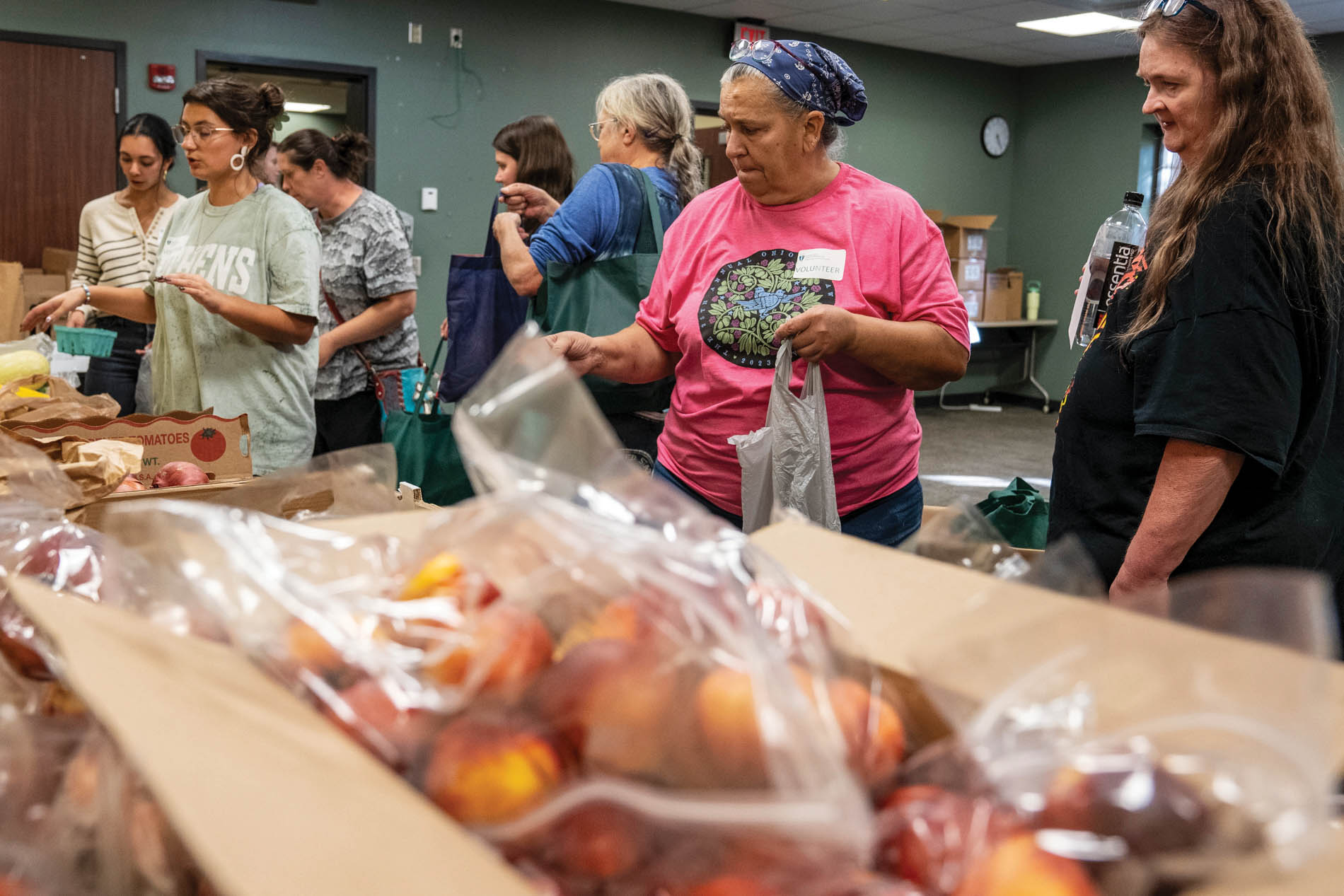
Participants and volunteers look over fresh produce items at Heritage Community Clinic’s monthly food pantry. Photo by Hannah Clark, MA ’24
Roadblocks to accessing care
In addition to lack of insurance and poverty, lack of transportation is a factor that can prevent rural residents from receiving health care. Enter Heritage College mobile clinics, which provide primary care, sexual health and wellness, women’s health and more. Mobile clinics regularly visit sites in Athens and surrounding counties.
“Being a medical home and having as many primary care patients as we do now, we need to be in those counties more often,” says Perry County native Carole Merckle, BSN ’10, MSN ’18, director of clinical operations for the Heritage Community Clinic.
Merckle’s language—medical home—is a testament to the way she and her staff think of their patients. Merckle points to Appalachian culture that can have a distrust of outsiders until there is an established relationship and trust. “Honestly, I feel like the trust is pretty well built for most of our patients, probably at appointment No. 1,” she says.
Providing patients what they need outside of the exam room is another way Community Health Programs and the Heritage Community Clinic create relationships that build trust. For example, it’s now the third Tuesday of the month, meaning it’s food pantry distribution day at the clinic.
In 2023-24, this pantry gave out the equivalent of nearly 43,000 meals. It’s a “choice” pantry, which reduces food waste by allowing clients to select items to take home. Many are here specifically for the meat, fresh fruits and vegetables, and personal hygiene items. Informational flyers cover tips for healthy eating and details on other clinic services, like diabetes screenings, and “wraparound” services include professionals from Athens County Job and Family Services, who can help patients with other issues like finding jobs, child care and transportation.
“Our students who are going to be physicians will see patients who maybe don’t show up for an appointment,” says Heritage College assistant professor of primary care Sharon Casapulla, EDD ’12, MPH ’19. “In their training, if they learn one of the reasons they don’t show is because of child care or because of transportation … they can connect their patients with those resources.”
Along with the food pantry and its free clinic, Community Health Programs’ Family Navigator Program offers free baby supplies, from diapers to clothing to bottles, and uses evidence-based practices to provide free education and support for Medicaid-eligible pregnant clients and their families.
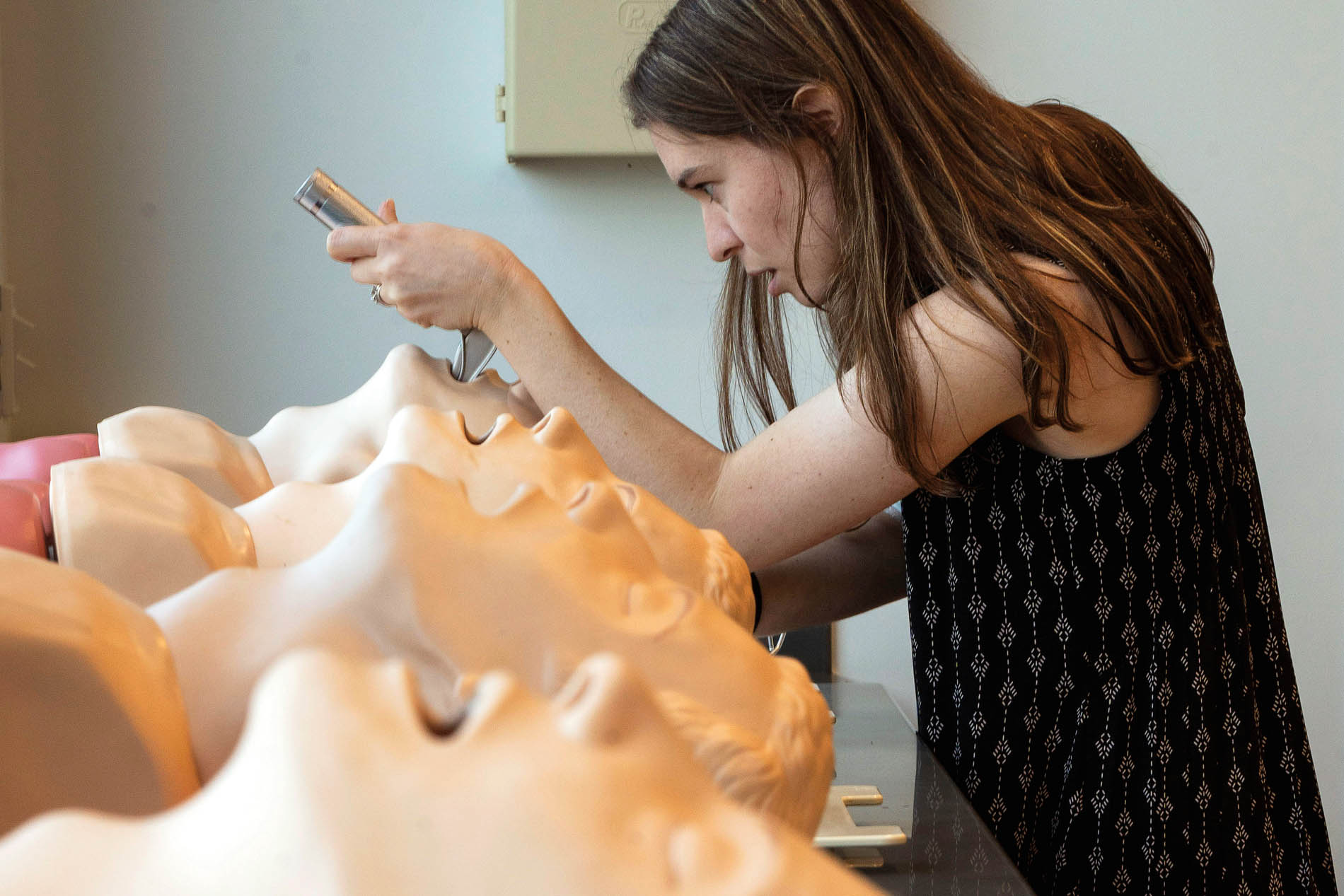
In August, OHIO’s Dublin Integrated Education Center celebrated the 10th anniversary of its Master’s of Physician Assistant Practice program with an open house featuring interactive simulation demonstrations led by current students. Photo by Ben Wirtz Siegel, BSVC ’02
The key to rural primary care
According to U.S. News & World Report, Ohio University is the state’s largest provider of primary care physicians; for number of graduates practicing in rural areas, OHIO is No. 1 in the state and No. 21 in the nation. Still, there simply aren’t enough physicians to meet the health care needs in many rural areas, so physician assistants, family nurse practitioners and other advanced practice registered nurses provide a critical role in filling primary care gaps. Fortunately, OHIO is a leader in those areas, too. In just the last year:
- The Master of Physician Assistant Practice (MPAP) program was ranked No. 1 among public institutions in the state of Ohio and No. 119 nationally by U.S. News & World Report.
- The online Bachelor of Science in Nursing to Doctor of Nursing Practice (BSN-DNP) was ranked No. 2 in the country by AllNurses.com.
- The online Master of Science in Nursing Family Nurse Practitioner (MSN-FNP) program was ranked No. 1 in Ohio by both RegisteredNursing.org and Nurse Practitioner Online.
When practicing nurses apply for OHIO’s MSN-FNP program, they are asked on their application 1) Why FNP, 2) Why OHIO, and 3) Why now?
“Their ‘why’ is uniquely personal, and often they will say, ‘I live in a rural community in XYZ County, and there are not primary care providers or there is one primary care provider,’” says Char Miller, executive director and associate professor in the University’s School of Nursing. “Our students are frequently returning to those communities post-graduation to help address that shortage.”
In short, identifying rural residents who may want to pursue careers in the medical field tends to be more effective than trying to get medical providers to move to rural areas. This is where OHIO’s recent expansion of its nursing degree programs comes in.
All five regional campuses now offer a BSN, and community health clinicals in those campuses’ communities include vaccine clinics, public health education and health screenings. And in February 2025, the J.W. & M.H. Straker Charitable Foundation Nursing Wing opened at OHIO Zanesville with advanced practice labs, cutting-edge simulation spaces and more to help train nursing students to provide safe, effective care. The curriculum emphasizes the needs of vulnerable populations like those in rural areas. “On regional campuses, by and large, [graduates] stay in those communities,” Miller says.
OHIO also offers standalone, post-graduate nursing certificates—including an emergency nurse practitioner certificate, new this fall—and both MSN and DNP degrees, which train advanced practice nurses in primary care, psychiatric medicine, gerontology-acute care or nurse anesthesia.
With the National Council of State Boards of Nursing predicting that nearly 40% of nurses will leave the workforce by 2029, OHIO’s School of Nursing prepares nurses to stay in the field by teaching essential clinical skills and setting realistic expectations for both the challenges and rewards of a nursing career. Completion rates for the BSN program are typically 90% or higher, compared to the national average of 80%.
OHIO’s MPAP program at the Dublin Integrated Education Center in Central Ohio, which celebrates its 10th anniversary this year, has similar student success outcomes. The classes of 2023 and 2024 each had 100% first-time pass rates for the Physician Assistant National Certifying Examination (PANCE); nationally, first-time pass rates were 92% and 94% in 2023 and 2024, respectively. The 27-month program emphasizes primary care in medically underserved urban and rural communities, preparing gradates for careers in a field with growing demand: According to the U.S. Bureau of Labor Statistics, PA employment is projected to grow 28% from 2023 to 2033—faster than average across all occupations.
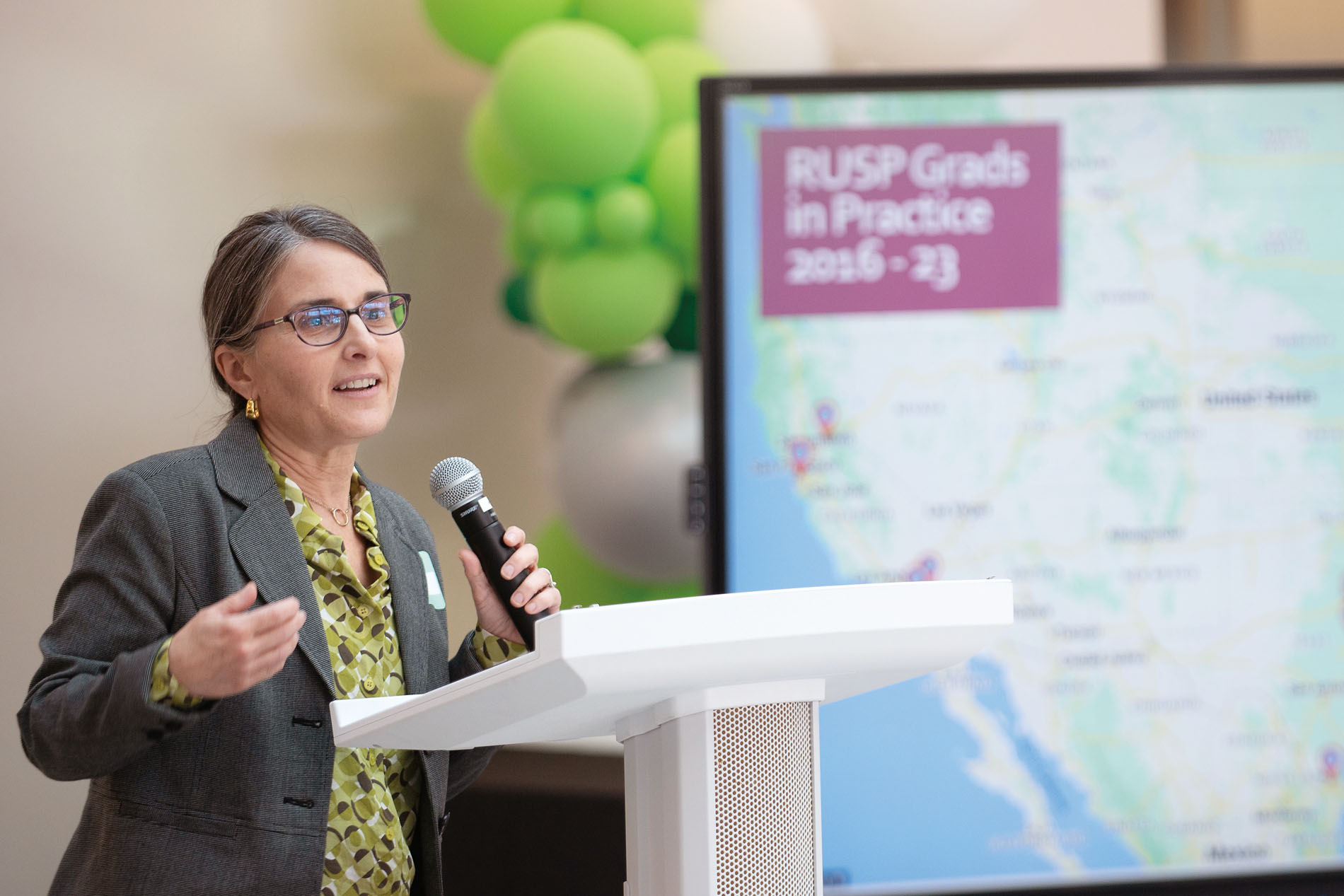
Rural and Urban Scholars Pathways Director Sharon Casapulla shares program outcomes at a 2023 networking event. Photo by Dylan Townsend, BSVC ’24
Training the next generation
Heritage College doesn’t simply provide the infrastructure to deliver health care and social supports to rural patients; it trains the next generation of physicians who will care for them.
Closely aligned with the Community Health Programs is the Consortium for Health Education in Appalachia Ohio (CHEAO), a federally funded Area Health Education Center (AHEC) that helps recruit, train and retain well-qualified health care professionals in rural and underserved areas by sponsoring continuing education for physicians and nurses, coordinating on-site clinical training for Heritage College students, organizing health care career fairs and more.
The college also has specific initiatives to prepare rural primary care physicians, including the Rural Experience in Appalachian Community Health (REACH). The four-week program immerses students in rural community health at the end of their first year, emphasizing the connection between public health and medicine through clinical residency and engagement with local nonprofit social support organizations.
Another program, Rural and Urban Scholars Pathways (RUSP), is a co-curricular learning community that prepares students to work in medically underserved areas, both urban and rural, through yearlong, longitudinal, integrated clerkships. Its graduates practice in rural areas at twice the national average.
“One of the things that HCOM specifically is good at ... is community partnerships,” says Casapulla, who also serves as RUSP director and president of the Ohio Rural Health Association. “A lot of these challenges that we’re talking about with health care can’t be addressed by one entity alone. It’s not for medicine to solve; it’s not for public health to solve. All of the different organizations and institutions in a community need to be thinking about how to address it and how to work together.”
Kasey Roush, DO ’25, worked both as a pharmacy tech and a medical assistant for five years in Gallia County prior to medical school; like others, she was already dedicated to rural health care when she enrolled at Heritage College. She participated in RUSP and learned what she wanted—and didn’t want—to do with her future as a primary care physician in Southeast Ohio. Still, particular situations could be challenging. This is where another feature of RUSP came through for her: Clinical Jazz.
Clinical Jazz is a monthly, small-group peer session composed of medical students in different cohorts, plus professional facilitators. At meetings, students can share a difficult situation they’ve experienced to get feedback and coaching. Roush presented her quandary to the group: A patient from her past relapsed and died. “It really bothered me, and I was like, ‘Should I go to his funeral?’” she explains. “Where is the line?”
One of Roush’s facilitators was Dr. Randall Longenecker, assistant dean emeritus of Rural and Underserved Programs, who was instrumental in developing RUSP. He had ready advice for her. “He said he went to many funerals because it’s a community, too, with rural medicine,” Roush recalls. “You’re part of the community.”
Feature photo: Danielle Schabel, BSN ’13, performs a skills demonstration in the lab at Ohio University Lancaster. Schabel teaches and is the assistant director for nursing at the Lancaster Campus. Photo by Ben Wirtz Siegel, BSVC ’02


